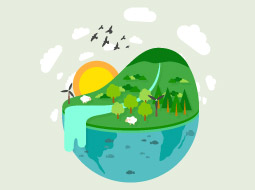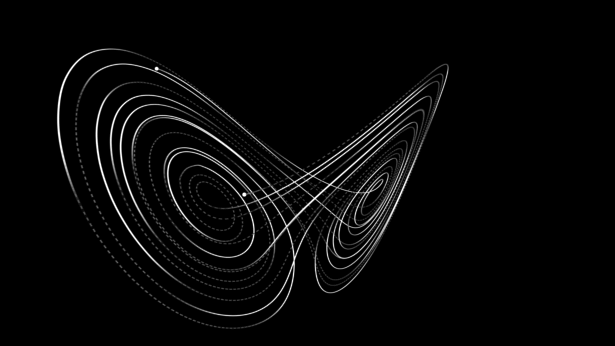Enviro-toons—animated shorts and feature films with ecology at their center—ask an audience to re-perceive everyday issues, themes, and knowledge related to differing phases of the American environmental movement: human ecology, organismic ecology, economic ecology, and chaotic ecology. The field of ecology, literally the study of homes, as its Greek root oikos (which translates as “household”) suggests, was named by German biologist Ernst Haeckel, in response to Charles Darwin’s work in evolutionary theory in the 1850s. According to Annette Kolodny, Haeckel’s notion of ecology as the study of homes served as the inspiration for the development of the field of human ecology.
The human ecology movement grew out of the work of Chemist Ellen Swallow Richards, who translated Haeckel’s work from its original German and, according to Robert Clarke, introduced the concept of ecology in the United States. Richards defined human ecology as "the study of the surroundings of human beings in the effects they produce on the lives of men" (1910). Since she viewed humans as part of nature, she considered urban problems like air and water pollution as products of human activity imposed on the environment and, subsequently, best resolved by humans. The human ecology movement eventually evolved into home economics, but its grounding in conservation had lasting effects. A 1948 New York Times editorial, for example, endorsed a smoke abatement protest by “urg[ing] housewives and others to take this opportunity” to join the anti-pollution campaign.
Organismic ecology is based on Frederic Clements’ view of a plant community as a living organism that evolves through succession. According to Clements, as a living organism, a plant community changes over time: “The unit of vegetation, the climax formation is an organic entity. As an organism, the formation arises, grows, matures, and dies…. The climax formation is the adult organism, the fully developed community” (Clements 124-25 qtd. in Merchant 182). This process of succession paralleled both the life cycle and the developmental history of the United States, with pioneer species invading ecosystems until climax communities of species were established: the deciduous forest climax, the prairie-plains climax, the mountain range climaxes of the Rocky Mountains, and the desert climaxes of the Southwest. A plant community is also vulnerable to disruption or death by technologies such as those that caused the Dust Bowl, however, when humans as pioneer species “had not appreciated or understood the grassland biome native to the Plains” (Merchant 184).
The organismic school of ecology “rejected Social Darwinist assumptions of a nature characterized by Thomas Henry Huxley as ‘red in tooth and claw,’ for a nature of cooperation among individuals in animal and human communities” (Merchant 184). Warder C. Allee and Alfred E. Emerson, organismic ecologists at the University of Chicago after World War I, saw the workings of the natural world as a model for healing societal problems. Organismic ecologist Aldo Leopold, on the other hand, applied human ethics to the natural world, constructing a manifesto, “The Land Ethic,” which encouraged an ecologically centered view of the land as a biotic pyramid in which humans were a part. In Leopold’s view, humans had “the scientific and ethical tools to follow nature and heal it” (Merchant 185).
Whereas the organismic approach to ecology encouraged preservationist policies toward the environment; the economic approach, in which ecosystems were seen as sums of their parts, not living organisms, encouraged fair use politics that called for the exploitation of resources for human gain. Such an approach valorized humans as managers who were “above nature and able to control it” (Merchant 186) and use environmental resources for human benefit. Economic ecologist Kenneth Watt asserts, for example, that human beings are economic animals, and “economic ecology’s goal is to maximize the productivity of each type of ecosystem and each level of that ecosystem for human benefit” (qtd. in Merchant 188). Although ecologist Eugene Odum connected the tenets of organismic ecology with those of the economic to demonstrate ways humans can repair the natural world, the ultimate goal of economic ecology—maximizing benefits of nature for humans—serves as more of a disruption than a tool for healing. Human ecology, organismic ecology, and economic ecology, however, are all products of Haeckel’s development of ecology as a field in his 1866 work, Generelle Morphologie der Organsmen, and overlapped from at least the late 1910s forward.
The last approach, chaotic ecology, did not emerge in its current form until the 1970s, when chaos theory was developed. Chaotic ecology views nature as a potential disruptor of its own ecosystems through natural disasters like hurricanes and tornadoes, for example. Since both human and nonhuman nature disrupt nature, this theory suggests, then “both can work in partnership to restore it” (Merchant 190). Yet chaotic ecology’s premise that nature disrupts its own ecosystems also parallels an ancient view of the natural world as a powerful force that sometimes overwhelms human nature.
Although these four approaches are sometimes seen as linear phases, they are rooted in Haeckel’s definitions of ecology and continue to influence environmental policy. They also continue to influence media responses to nature and the natural world, at least in the world of the short or feature-length animated film. We assert, then, that American enviro-toons from the 1930s forward reveal three narrative and aesthetic patterns in relation to the historical and cultural context and approach to ecology underpinning them:
- the power of nature over the human world,
- the need for controlling human intervention and nurturing the natural world in order to strengthen their interdependence, and
- criticism of human exploitation of the natural world.






No comments:
Post a Comment